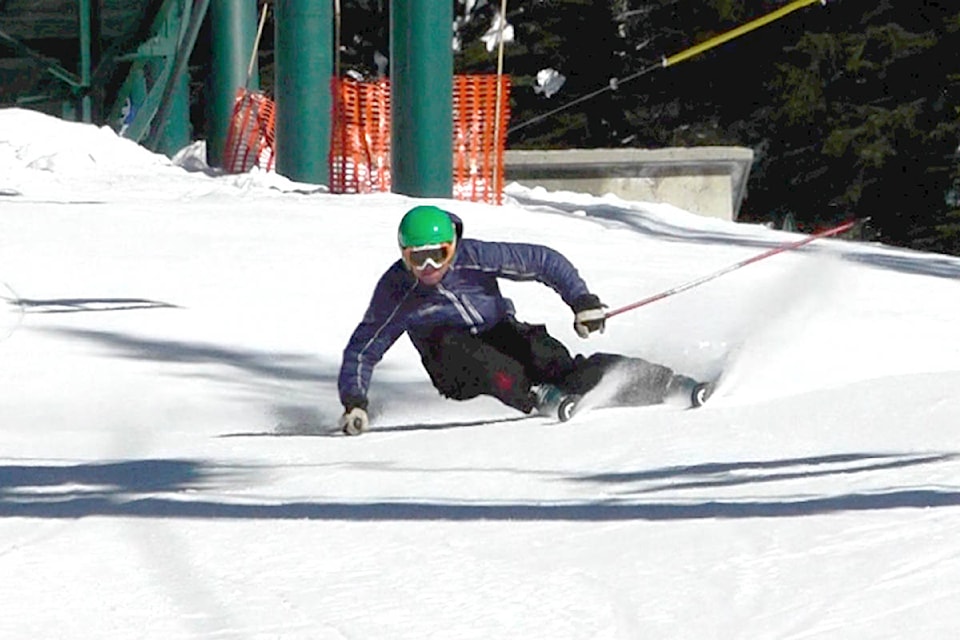By Dylan Henderson
The Whitewater Ski Team athletes are loving the process of building skills as the ski season progresses.
Ski racing is the art and science of training athletes to use the most advanced ski technology to its fullest potential. Each ski is designed to carve a perfect turn and the skier must allow the ski to perform by building the necessary skills to match.
When working on improving skill in a sport is as complicated as skiing, the sequence of movements is incredibly important. The timing of movements is just as essential as how well we make the move.
The basic sequence starts with rolling the skis on edge with the ankles at the initiation of the turn, then driving the knees to add edge angle, and finally angulating the hips near the end of the turn in order to match the powerful centrifugal forces pushing our body to the outside of the turn. I believe that we all really want to ski with more performance and this process is the key. Hip angulation is really fun, but it won’t happen if there is a missed step in the sequence.
There are some common mistakes made in the sequence of the turn. It is very common to see skiers lean into a turn. When a skier tips their head and shoulders into the hill to start a turn the skier is not in an athletic stance so is not able to manage ski performance well and have the agility to recover and regain balance.
It is also common to see skiers use their hip to start a turn. The hip is very important at the end of the sequence but not at the beginning. Edge angles are created with the ankles and knees, and hip angulation is used once the pressure builds under the ski. If a skier rushes to use the hip they are not going to have good turn shape and ski performance.
The other common error is a pivot or sliding of the skis at the start of the turn. Any time there is a sliding ski it means that the ski is not bent anymore, meaning that there is no energy or ski performance being created or stored.
Doing garlands is a great way to work on the sequence of movements. Go to a nice wide groomer and start on one side and ski across the run with just enough speed to get your skis to carve, doing a crescent-shaped turn across until you start to slow down, then repeat until you are at the far side of the run. Focus on starting the carve with ankles, then knee, and then add some hip at the end.
Now, turn around and repeat going across the run the other way. Look back and make sure you are leaving perfect pencil line tracks in the snow. Once you repeat this a few times you are ready to start linking turns using more edge angle and angulation, creating more ski performance and having more fun!
Dylan Henderson is the head coach of the Whitewater Ski Team. He is a certified Development Level coach with the Canadian Ski Coaches Federation and a Level 1 ski instructor with the Canadian Ski Instructors Association. Henderson was also named 2017’s top ski coach by B.C. Alpine.
